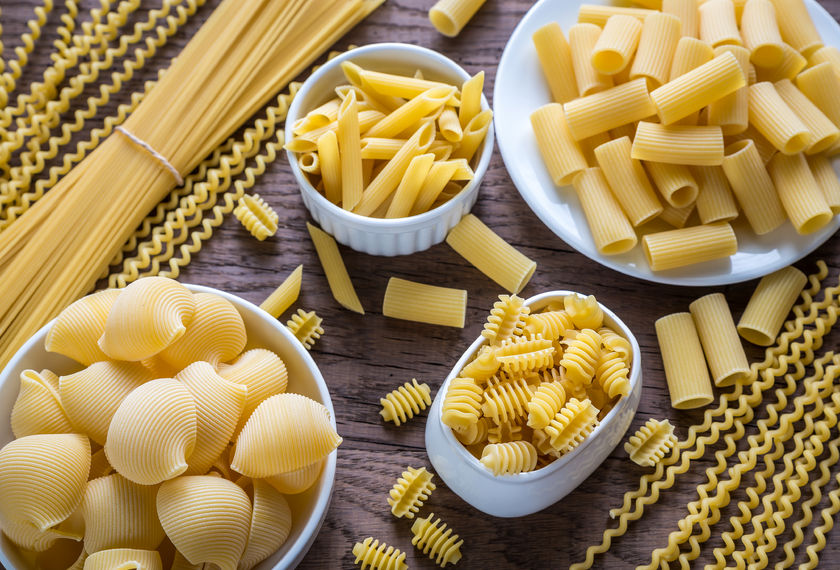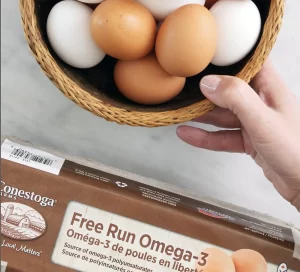

Pasta-bilities! The Versatility of Pasta
Who says you need a ton of time and ingredients to make a great pasta dish? One of the countless reasons we love pasta is because of the endless meal possibilities! Limited only by your imagination, you can add as many or as few ingredients as you like to pasta to create a unique and delicious meal.
Whether you’re short on time or ingredients, you can still create an appealing pasta dish simply by experimenting with leftover ingredients you’ve got lying around the kitchen. Chop up those vegetables you’ve got in the fridge and add a splash of olive oil and some herbs for some flavor. Or throw in that leftover chicken from the weekend and sauté it in some olive oil with a pinch of salt and pepper. Top that with fresh cheese and you’ve got a healthy pasta meal using ingredients you already had in the pantry.
Pasta’s variety of shapes makes it even more versatile as they allow you to play around with different pairings. Typically, strand and ribbon noodles are best paired with thinner sauces and shapes are better for capturing thick sauces. But, there’s no need to stick to those rules; feel free to experiment with different pasta shapes and sauces to see which combinations you like best.
Fresh vs. Dried
We’re probably more familiar with dried pasta which has a much longer shelf life. Stored in air tight containers and kept in a cool, dry place, dry pastas will last almost indefinitely. When cooked, dried pasta doubles in size and if not used right away, the cooked pasta may be stored in a tightly sealed container in the refrigerator for five or six days. Worried about it sticking together? Mixing several teaspoons of oil into cooked pasta will help. You can also freeze cooked pasta for two to three months.
Fresh pasta is also available and sold in airtight plastic containers with the air removed. It should only be stored in the refrigerator up to four days after you open it or you can freeze it for up to a month. Fresh pasta has a shorter cooking time than the dried type and it won’t increase in volume too much when you cook it
Is there an obvious choice on which is better? Not really. The choice is yours!
Pasta Innovations & Alternatives
Whether you’re following a low-carb, gluten-free, low-glycemic index or low-calorie diet, the pasta you know and love is probably on your do-not-eat list. So, during your next trip down the pasta aisle, check out these six types of good-for-you grains.
Whole Wheat Pasta
The traditional alternative to refined pasta is whole wheat pasta: a great option for people who want to increase their fiber and protein intake. Instead of being stripped down during the milling process, the flour in whole wheat pasta is left whole.
Quinoa Pasta
Quinoa is one amazing grain and in pasta form, quinoa flour contains more protein than any other flour you’ll find, is rich in iron and magnesium, and is gluten-free, making it ideal for those with celiac disease. Plus, quinoa pasta reduces blood sugar, insulin, and triglyceride levels better than other gluten-free pasta.
Buckwheat Noodles
Also known as soba noodles, buckwheat noodles are a type of Japanese pasta typically served cold. They’re also lower in both calories and carbs than other pastas.
Spelt Pasta
Spelt pasta is a high-fiber, high-protein option that’s free of wheat, but unfortunately that doesn’t mean it’s free of gluten since spelt and wheat are cousins in the grain world.
Brown Rice Pasta
Brown rice pasta is an ideal way for people with severely restricted diets or food sensitivities to get their pasta on. It’s free of both gluten and other molecules that can be poorly absorbed in people with irritable bowel syndrome.
Konjac Root
If you’re following a low carb lifestyle like Keto or Atkins, pasta made from the Konjac root are all the rage—giving you the freedom to enjoy your favourite pasta dishes without the carbohydrate hit!
Vince’s Market has all your pasta needs covered—from the types of pasta to the other ingredients needed to make a delicious meal. Just come in and check it out!
As always, we welcome your questions and feedback. You can leave a comment right here on the site. Or head on over and join in the conversation on Facebook (remember to ‘Like’ the page) and Twitter. If you haven’t already signed up to receive our weekly news delivered right to your inbox (including the blog, our weekly product feature, signup for our Coterie Program, and our recipe of the week), you will find the signup by clicking here.
Until next time,
— Julie






